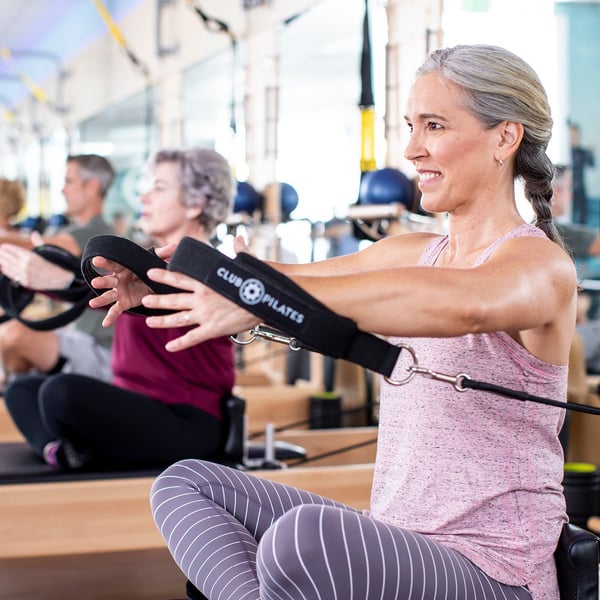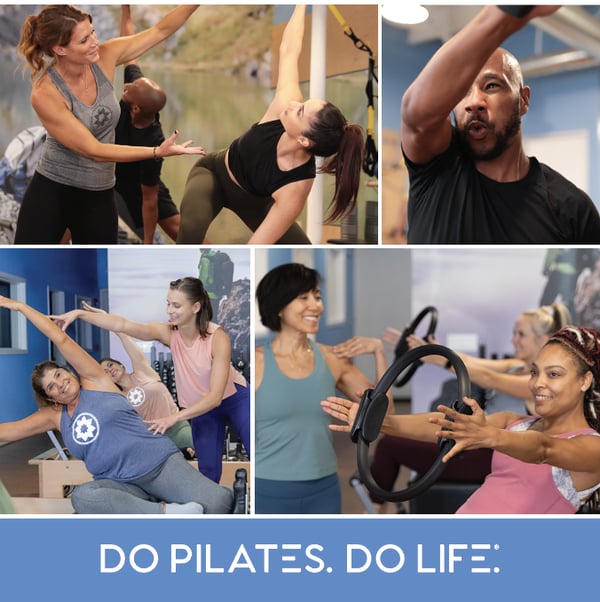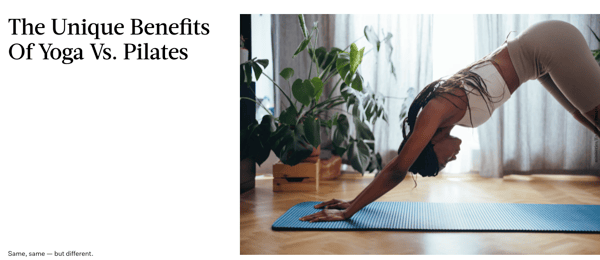Originally published in The Manual.
Though many people often focus on the best workouts for cardio and strength training, improving overall fitness requires more from the body than what those two types of exercise can offer. Incorporating a regular Pilates practice can help strengthen the body in more ways than you might realize. Because Pilates utilizes body weight and some resistance tools and equipment, the form of exercise engages more of your body with each movement.
Many, if not most, exercises in the Pilates routine, such as planks, are designed to help work your entire body rather than a target zone. Unlike yoga, Pilates requires a good deal of movement and very conscious control of every movement during each exercise. That is why Pilates helps build strength, endurance, and flexibility.
Dr. Betiku on Why Men Should Try Pilates

Another great thing about Pilates is that gyms offer Pilates classes which are outfitted with the equipment you will need for the class. Other options like Club Pilates are also wonderful because there are more class options to choose from that meet the needs you require from a class be it more restorative or higher intensity.
By including Pilates into your weekly visits to the gym, you can boost your overall fitness and see better performance in other areas of fitness such as weight lifting or cardio too. The Manual spoke with Dr. Femi Betiku, DPT CSCS PMA-CPT and certified Pilates instructor at Club Pilates, to find out why and how Pilates can benefit men.
Benefits of Pilates

According to Dr. Betiku, Pilates is a wonderful tool for men because it helps alleviate the acute and chronic pain, like lower back pain or neck pain, that many men suffer. “Pilates helps with core strength and spinal stability as well as proper neck and shoulder alignment; therefore neck and low back issues are easily treated with Pilates,” Dr. Betiku said. Additionally, Pilates solves many flexibility and mobility issues men may be facing, too. Without proper flexibility and mobility, people are more prone to suffer muscular and joint injuries.
But Pilates can also help internally, with prostate dysfunction. “Prostate issues occur sometimes due to a weak pelvic floor or overactive pelvic muscles,” Betiku said. “Through pelvic floor activation and relaxation as well as breathing, Pilates can improve this issue,” he added. This benefit of the practice also helps men become more aware of their bodies. When awareness increases, men can shift how they carry themselves to use proper form and minimize the pain that poor posture is causing.
Dr. Betiku’s Best Tips for Pilates Beginners

“For all of my newbies who take our Club Pilates classes, they should stick with our Level One classes for at least a month just so they can hone in on how their bodies should feel during each type of movement,” Dr. Betiku explained. But even if you do not practice with Club Pilates, it is a good idea to spend a similar amount of time keying into and honing your Pilates foundation.
Another helpful tip Dr. Betiku gives is that you can monitor progress each class by paying attention to how your body feels and responds to each exercise because the general routine of every class is the same. “Each class usually starts off with a series of the same exercises just with different variations, these are the movements to focus on to make sure they are utilizing the appropriate muscles, alignments, postures, and breathing patterns,” he said. So, even if it takes several classes to get into your Pilates groove, know that the repetition will help you pick up the exercises more quickly while building strength.
How to Get Started on Pilates

Anyone can get started with Pilates by finding a local class to attend.
However, it can be frustrating for beginners to jump into a regular class when others have been spending months building their foundation and are moving forward. Modifications can almost always be made to accommodate all skill levels, but Club Pilates has four different levels of classes to make things easier. Beginners can attend level one classes that are specifically designed to build the foundation and strength for more advanced Pilates. Only after students have mastered each level can they move up to subsequent levels to increase the difficulty. To reach the highest level, Club Pilates requires students to have practiced for at least three months with the facility or have permission from a Club Pilates instructor.
Once you find a class that suits you and your skill level well, consistency is key.
Dr. Betiku suggests taking classes once a week to get started. However, scaling up to at least three Pilates classes per week will help students advance more quickly.
After a routine has been established and followed for some time, students can likely tell from their own performance if their fitness has improved. Pay attention to or document any body aches or pains you experience before starting a Pilates practice and watch it diminish with time. Keeping track of strength, flexibility and endurance are also good measures of progress too, according to Dr. Betiku.



